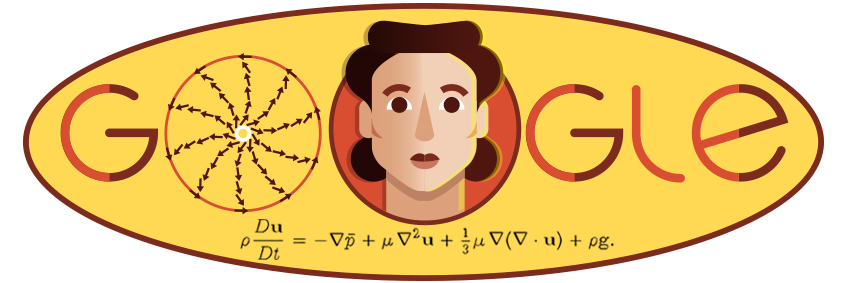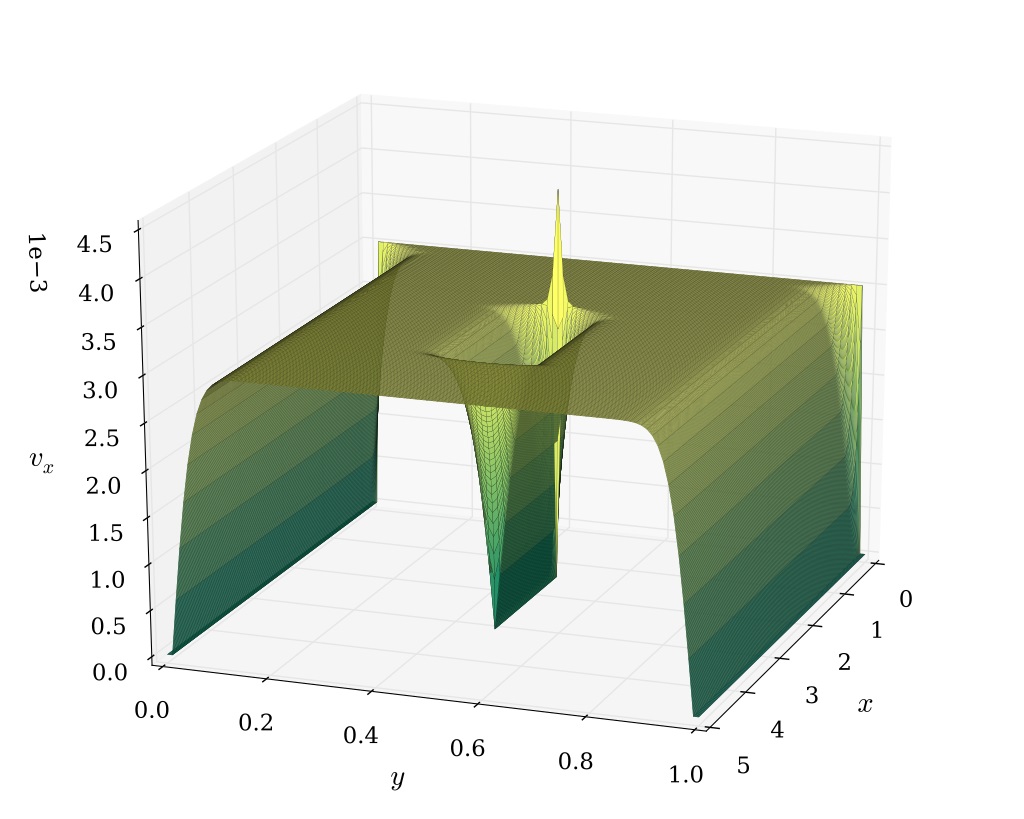博文
[转载] Ladyzhenskaya不等式
||
https://en.wikipedia.org/wiki/Ladyzhenskaya%27s_inequality:
In mathematics, Ladyzhenskaya's inequality is any of a number of related functional inequalities named after the Soviet Russian mathematician Olga Aleksandrovna Ladyzhenskaya. The original such inequality, for functions of two real variables, was introduced by Ladyzhenskaya in 1958 to prove the existence and uniqueness of long-time solutions to the Navier–Stokes equations in two spatial dimensions (for smooth enough initial data). There is an analogous inequality for functions of three real variables, but the exponents are slightly different; much of the difficulty in establishing existence and uniqueness of solutions to the three-dimensional Navier–Stokes equations stems from these different exponents. Ladyzhenskaya's inequality is one member of a broad class of inequalities known as interpolation inequalities.
Let Ω be a Lipschitz domain in Rn for n = 2 or 3, and let u: Ω → R be a weakly differentiable function that vanishes on the boundary of Ω in the sense of trace (that is, u is a limit in the Sobolev space H1(Ω) of a sequence of smooth functions that are compactly supported in Ω). Then there exists a constant C depending only on Ω such that, in the case n = 2,
and, in the case n = 3,
Generalizations
Both the two- and three-dimensional versions of Ladyzhenskaya's inequality are special cases of the Gagliardo–Nirenberg interpolation inequality
which holds whenever
Ladyzhensakaya's inequalities are the special cases p = 4, q = 2, s = 1, and α = 1/2 when n = 2 and α = 1/4 when n = 3.
A simple modification of the argument used by Ladyzhenskaya in her 1958 paper (see e.g. [1] Constantin & Seregin 2010) yields the following inequality for u: R2 → R, valid for all r ≥ 2:
The usual Ladyzhenskaya inequality on Rn, n = 2 or 3, can be generalized (see [3] McCormick & al. 2013) to use the weak L2 “norm” of u in place of the usual L2 norm:
References
[1] Constantin, P.; Seregin, G. (2010), "Holder continuity of solutions of 2D Navier–Stokes equations with singular forcing", Nonlinear partial differential equations and related topics, Amer. Math. Soc. Transl. Ser. 2, 229, Providence, RI: Amer. Math. Soc., pp. 87–95 https://arxiv.org/pdf/0901.3508.pdf
[2] Ладыженская, О. А. (1958). "Решение "в целом" краевой задачи для уравнений Навье – Стокса в случае двух пространственных переменных". Доклады Академии наук СССР. 123 (3): 427–429. [Ladyzhensakya, O. A. (1958). "Solution in the large to the boundary-value problem for the Navier-Stokes equations in two space variables". Soviet Physics Dokl. 123 (3): 1128–1131.]
[3] McCormick, D. S.; Robinson, J. C.; Rodrigo, J. L. (2013). "Generalised Gagliardo–Nirenberg inequalities using weak Lebesgue spaces and BMO". Milan J. Math. 81 (2): 265–289 https://arxiv.org/pdf/1303.6351.pdf
[4] http://www.mi-ras.ru/index.php?c=main&l=1

Books of Olga Aleksandrovna Ladyzhenskaya (She was known for her work on partial differential equations (especially Hilbert's 19th problem) and fluid dynamics. She provided the first rigorous proofs of the convergence of a finite difference method for the Navier–Stokes equations):
[1] Ladyzhenskaya, O. A. (1969) [1963], The Mathematical Theory of Viscous Incompressible Flow, Mathematics and Its Applications, 2 (Revised Second ed.), New York–London–Paris–Montreux–Tokyo–Melbourne: Gordon and Breach, pp. XVIII+224, MR 0254401, Zbl 0184.52603.
[2] Ladyženskaja, O. A.; Solonnikov, V. A.; Ural'ceva, N. N. (1968), Linear and quasi-linear equations of parabolic type, Translations of Mathematical Monographs, 23, Providence, RI: American Mathematical Society, pp. XI+648, MR 0241821, Zbl 0174.15403.
[3] Ladyzhenskaya, Olga A.; Uralt'seva, Nina N. (1968), Linear and Quasilinear Elliptic Equations, Mathematics in Science and Engineering, 46, New York and London: Academic Press, pp. XVIII+495, MR 0244627, Zbl 0164.13002.
[4] Ladyzhenskaya, O. A. (1985), The Boundary Value Problems of Mathematical Physics, Applied Mathematical Sciences, 49, Berlin–Heidelberg–New York: Springer Verlag, pp. XXX+322, ISBN 0-521-39922-X, MR 0793735, Zbl 0588.35003 (translated by Jack Lohwater).
[5] Ladyzhenskaya, O. A. (1991), Attractors for Semigroups and Evolution Equations, Lezioni Lincee, Cambridge: Cambridge University Press, pp. xi+73, MR 1133627, Zbl 0755.47049

https://kuaibao.qq.com/s/20181005A0ZRHR00?refer=spider, https://www.zhihu.com/question/38369082/answer/484542976, http://www.ifuun.com/a2018102016703583/: 

她在40岁之前已经做出了非常了不起的数学成果,她的工作覆盖了偏微分方程的整个谱,从双曲型方程到由Hessian特征值的对称函数生成的微分方程,讨论了从解的唯一性到Fourier级数或有限差分逼近的收敛性等问题。她用Leray-Schauder度理论发展了非线性平稳问题的功能解析处理,并为耗散方程开创了吸引子理论。她是三个专著的作者,在上世纪下半叶,极大地影响了偏微分方程组的发展。 “虽然她是一位数学巨人,但她并不是一位数字分析师;然而,她确实为Navier-Stokes方程的有限差分法的收敛性提供了第一个(也仍然是为数不多的)严格的证明。更重要的是,她在偏微分方程方面的开创性工作对那些专门从事数值偏微分方程的人有着巨大而持久的影响。例如,她是在Stokes方程和Navier-Stokes方程的混合有限元离散中产生的著名LBB条件的“L”。她的数学工作对当今流体力学和传热领域都具有革命性影响
https://blog.sciencenet.cn/blog-498408-1166188.html
上一篇:[转载] AbbVie与Voyager合力开发帕金森病基因治疗新方法
下一篇:[转载] 狂鹿症CWD可能傳染到人身上





